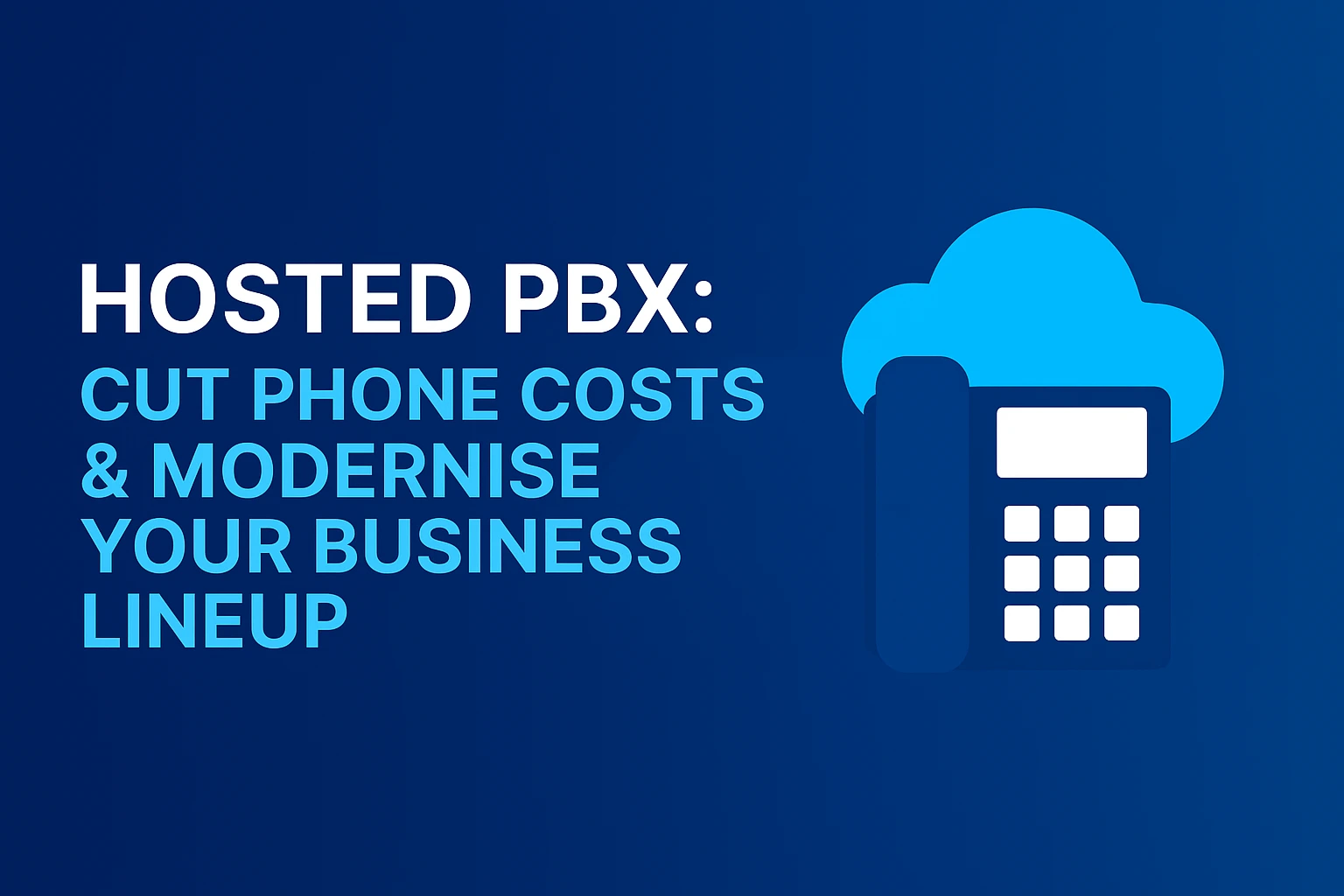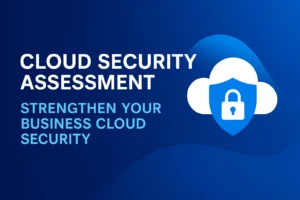Why your comms need a hosted PBX now
If your office still treats telephony like a relic of the last decade, you’re paying for it — literally and operationally. A hosted PBX moves your phone system into the cloud so calls, voicemail, conferencing, and call routing live on a provider’s platform instead of an on-site server. That means lower capital cost, easier scaling, and faster feature rollout, but only if the migration is done right. This article explains what hosted PBX is, why businesses pick it, how hosted PBX pricing works, what hardware you’ll need (yes, phones too), and a practical checklist to evaluate hosted PBX providers and vendors. Read on to make a confident buying decision and avoid the common traps that turn savings into headaches.
What exactly is a hosted PBX?
A hosted PBX (Private Branch Exchange) is a cloud-based phone system managed by a third-party provider. The provider hosts the call-control software in their data centre and delivers telephony services to your organisation over the internet (VoIP). Users get extensions, hunt groups, IVR, voicemail, conferencing, and advanced call features without owning or maintaining on-premise PBX hardware. (Mitel)
Plainly: your business controls numbers and call flows; the vendor runs the servers, applies updates, and provides support.
Hosted PBX vs on-prem PBX vs SIP trunks: short, useful differences
- Hosted PBX: Provider hosts the PBX; monthly per-user subscriptions; minimal on-site hardware. Best for businesses that want lower CapEx and managed operations.
- On-prem PBX: You own PBX servers or appliances. Greater control, higher CapEx, heavier maintenance burden. Often chosen where strict compliance or isolated networks are required.
- SIP trunking (with on-prem PBX): Keep on-prem PBX but move trunking to an internet provider to cut PSTN costs. It’s a hybrid strategy.
Choosing between these depends on risk tolerance, control needs, and available IT skills.
Commercial benefits: why businesses choose hosted PBX
The decision is rarely purely technical; it’s financial and operational. Key commercial benefits include:
- Lower upfront costs. No bulky PBX hardware purchases. Migration is usually subscription-based. (RingCentral)
- Faster scaling. Add or remove users and numbers on demand.
- Feature velocity. Providers push new features (mobile apps, analytics, AI call routing) without on-site upgrades.
- Remote work support. Softphones and mobile apps let staff keep the same extension everywhere.
- Simplified vendor management. One provider for call control, resilience, and support if you pick wisely.
These benefits make hosted PBX an attractive commercial choice for most SMEs and many mid-market firms.
Hosted PBX providers: what to evaluate
When you shortlist hosted PBX providers, treat them like mission partners. Don’t pick only on price. Vet these areas:
- Service availability & SLA: Look for uptime guarantees and credits.
- Local support: Australian businesses benefit from local support and on-shore resources for rapid incident handling.
- Emergency call handling & compliance: Confirm how they manage emergency (000) calls and IPND registration. Regulatory responsibilities differ by provider. (ACMA)
- Security posture: TLS for SIP signalling, SRTP for media, SBCs (Session Border Controllers), and fraud protections.
- Integrations: CRM, helpdesk, and Microsoft 365/Teams integrations matter for productivity. (Microsoft Learn)
- Porting & number management: Ask about porting timeframes, number rental, and geographic vs toll-free support.
- Trial & pilot options: A short paid pilot for voice quality and workflows is non-negotiable.
Choosing the right provider reduces migration risk and ensures your telephony becomes an asset, not a project pain point.
One table: hosted PBX buying snapshot
Decision area | What to ask | Typical answer to expect |
Provider type | Are you pure-SaaS or hybrid (SBC + cloud)? | SaaS for simplicity; hybrid for complex compliance. |
Pricing model | Per-user license, minutes, number rental? | Per-user monthly + call/min rates + number fees. |
Features | Does it include IVR, call recording, and director-dial? | Most include IVR/queues; recordings often add cost. |
Integration | CRM, Teams, SIP devices supported? | Look for native CRM connectors and Teams Direct Routing support. (Microsoft Learn) |
Resilience | Multi-region hosting, failover trunks? | Redundant trunks and PSTN failover are recommended. |
Security | SBC, TLS/SRTP, fraud detection? | Expect all three on a professional platform. |
Hosted PBX pricing: What drives cost
Hosted PBX pricing varies a lot by vendor and features. Pricing drivers:
- Per-user licence: The bulk of the monthly cost (basic seats vs premium seats with voicemail transcription, call analytics, etc.).
- Call charges: Local, mobile, and international per-minute rates are especially relevant for sales teams who call mobiles often.
- Number rental/port fees: Monthly rental for geographic/toll-free numbers and one-off porting charges.
- Recording/storage: Call recording retention and secure storage often cost extra.
- Hardware: IP handsets, analogue adapters for legacy devices, gateway gear where needed.
- Support tiers & SLAs: 24/7 response and dedicated account managers typically add to the price.
Indicative ranges (Australia, small business scale): per-user licences commonly sit between A$15–A$50/month, with voice minutes and add-ons on top. Always request a full TCO projection that includes internet upgrades and redundancy costs before committing.
Hosted PBX phones: desk phones, softphones, and BYOD
Hosted PBX supports three common endpoint types:
- IP desk phones (Poly, Yealink, Cisco): durable, high-quality audio for receptionists and executives.
- Softphones / mobile apps: App-based phones for remote staff, field sales, and nomadic users.
- Analogue adapters/gateways: For legacy fax machines or door phones.
Buyers often mix and match: desk phones for office users and softphones for remote staff. Remember warranty and provisioning: good providers will zero-touch provision compatible phones, so devices auto-configure when plugged in.
Network, QoS, and Internet: the unsung requirements
A hosted PBX is only as good as your internet connection. Key network items:
- Bandwidth planning: Allow ~100–200 kbps per concurrent wideband call as a planning figure.
- QoS (Quality of Service): Voice VLANs and DSCP tagging to prioritise voice packets on the LAN.
- Redundancy: Secondary internet or automatic failover to a secondary SIP trunk/PSTN path reduces outage risk.
- Firewall & NAT rules: SIP ALG and poorly configured firewalls break calls; vendors often publish recommended firewall rules.
If your internet isn’t an explicit enterprise-grade, factor in a business internet upgrade. Code Hyper One helps customers select and provision business fibre or dedicated links to support voice traffic reliably. (Code Hyper One)
Security & compliance: practical protections
Hosted PBX systems are attractive targets for fraud and eavesdropping. Practical protections:
- Encrypt signalling and media: Use SIP over TLS and SRTP.
- SBCs at the edge: A managed SBC inspects and secures SIP flows and masks your internal IPs.
- Rate-limiting & usage alarms: Prevent and detect toll-fraud attempts early.
- Strong admin controls: Multi-factor authentication for portals and strict password policies.
- Retention & lawful access controls: If you record calls, ensure storage is encrypted and access is audited.
A good managed provider includes these protections as standard in their enterprise offering.
Emergency calls and Australian regulatory notes
In Australia, emergency calls (000) and their handling are regulated, and VoIP/hosted services must comply with location and IPND data obligations. Providers must be able to convey accurate caller location for emergency responders, and customers should verify how nomadic or remote users are handled. Check your provider’s emergency call policy carefully during procurement. (ACMA)
Implementation roadmap: deploy hosted PBX with confidence
- Requirements workshop: Call volumes, call flows, integrations (CRM, Teams), and remote user needs.
- Network readiness: Bandwidth, QoS, firewall checks, and internet redundancy.
- Pilot: Migrate a pilot group (reception, support) for 2–4 weeks and measure MOS and call completion.
- Number strategy: Decide on porting windows, number rental, and national vs local numbers.
- Security baseline: SBC deployment, TLS/SRTP, admin hardening.
- User training & runbook: Softphone quick guides, voicemail setup, and escalation procedures.
- Cutover & verification: Port numbers, test emergency calls, and failover scenarios.
- Ongoing optimisation: Use call analytics to right-size licences and improve IVR routing.
If you’d rather not run this project internally, a managed IT partner can run the entire sequence and provide ongoing SLAs. See Code Hyper One’s VOIP and Cloud PBX offerings for examples of managed implementations and local support. (Code Hyper One)
Hosted PBX pricing checklist: what to include in vendor quotes
Ask vendors to provide:
- Per-user license breakdown (basic vs premium).
- Call plan estimates for typical monthly minutes per user.
- One-time porting costs and number rental rates.
- Recording storage and retrieval fees.
- Hardware costs (phones, gateways) and provisioning fees.
- SLA response times and escalation process.
- Cost for PSTN fallback or secondary trunking.
A single line item for “telephony” is a red flag; insist on a full cost model.
When hosted PBX isn’t the right choice
Hosted PBX is excellent for most organisations, but consider on-prem or hybrid if:
- You have strict, regulated telephony requirements that mandate full on-site control.
- You run large legacy telephony integrations that are prohibitively expensive to replace.
- Your site cannot achieve reliable internet resilience and low-latency connectivity.
For many SMBs and mid-market teams, the hosted model still delivers the best blend of cost, features, and manageability.
The role of managed IT — why it matters
Migrating telephony affects the network, security, and business continuity. Managed IT providers remove the operational overhead by handling provider selection, network upgrades, security hardening, and 24/7 monitoring. They also integrate telephony with Microsoft 365/Teams and business apps, creating unified communications rather than a siloed phone system. If your IT team is small, the right MSP reduces risk and shortens time to value. See Code Hyper One’s services and Teams integration pages for managed options and demos. (Code Hyper One)
Conclusion: hosted PBX as a business decision, not a vendor one
A hosted PBX can cut costs, speed deployments, and modernise how your teams talk to customers, but the win depends on the details. Treat telephony as a business system: define outcomes (cost, uptime, integrations), stress test your network, demand transparent pricing, and insist on regulatory clarity about emergency calling. If you pair that checklist with a managed partner who understands VoIP, Teams, and Australian compliance, your phone system becomes a competitive advantage rather than a recurring headache.
Frequently Asked Questions
What is the difference between a hosted PBX and a cloud phone system?
A hosted PBX is a type of cloud phone system where the PBX functionality is run by a provider in their data centre. “Cloud phone system” is a broader term that can include SaaS UCaaS platforms. Both deliver telephony over the internet, but hosted PBX emphasises PBX features like extensions, hunt groups, and IVR. (Mitel)
How much does a business-hosted PBX cost per user?
Costs vary by feature and vendor. Small businesses should expect A$15–A$50 per user/month for basic hosted PBX licences, with additional costs for call minutes, number rental, and advanced features like call recording or analytics. Always get a detailed TCO that includes internet upgrades and redundancy. (Prices are indicative and will vary by provider and contract.)
Can a hosted PBX integrate with Microsoft Teams or our CRM?
Yes, many hosted PBX solutions provide native CRM connectors and Teams integration (via Direct Routing or native Teams Phone). Integration enables click-to-call, conversation logging, and unified presence, all of which improve productivity. Confirm the vendor’s integration approach during the evaluation phase. (Microsoft Learn)
Do hosted PBX phones work during an internet outage?
Unless you have planned for a failover. Best practice is to implement either a secondary internet link, PSTN fallback, or a managed SIP trunk with automatic failover. Test failover scenarios during pilot stages to ensure continuity. (Code Hyper One)
Are hosted PBX systems secure?
Yes, when providers use TLS/SRTP, SBCs, rate-limiting, and monitored admin portals. Security varies by vendor, so require a security checklist and ask how they detect and prevent toll fraud and eavesdropping.







